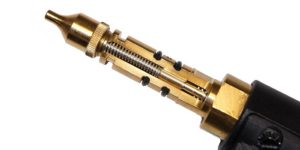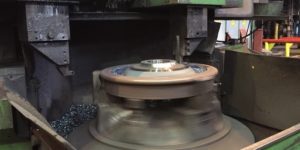Column
Filter by Process Zone:
How to Prevent Five Common Failures in Robotic Welding Systems

Are burnbacks, premature contact tip wear, loss of tool center point (TCP) or other problems costing your robotic welding operation time and money? Here are some tips that will improve productivity, reduce consumable costs and ensure consistent part quality in your robotic weld cell.
How to Avoid Losing Customers to Competitors

What’s the best strategy for keeping encroaching competitors away from your customers?
Critical Thinking: How to Make Chip Removal More Efficient, Effective and Profitable

Not all conveying systems are suited for every scrap-handling application. By using the proper conveyor to quickly transfer scrap and coolant from the machine tool for separation and processing, high volume machine shops can increase part production with less downtime between jobs, create more value for their scrap, and improve revenue by recycling coolant.
How to Increase Productivity with Self-Shielded Flux-Cored Wire

What if you could obtain high quality welds outdoors without the productivity slowdowns associated with changing stick electrodes? Self-shielded flux-cored wires allow welders to continue working without interruption. These wires have changed and improved from what was available several years ago, but you must understand how to select the best wire for the job.
Built to Last: Sheet Metal Design with Strength in Mind

Sheet metal has a high strength-to-weight ratio and good malleability that can provide form and structure to products, but because it is flat and bends easily, it doesn’t always work. Here are some ways to increase the structural strength of flat sheet stock without adding gussets or increasing the weight of the product.
Is the Vise Dead?

Even though it has been around forever, does the vise have limitations for shops in a competitive marketplace? Do you need to reinvent the wheel to reduce some of its limitations? To evaluate the vise’s viability in today’s manufacturing operations, we need to uncover the most efficient way to apply it.
An Overlooked Way to Keep Up with Industry Change

Press operation requirements, inspection needs, improved die technology, tool room utilization and lean initiatives are all transforming the way shops compete. But what if you can’t keep the die in the press because of cheap tooling?
Four Tips for Ensuring Proper Shielding Gas Coverage in TIG Welding

You’ve got a job that demands high weld quality and appearance. TIG welding will provide you with a greater level of control to achieve those desired results, but don’t overlook the importance of using the correct shielding gas.
How to Choose the Right Positioner for Your Robotic Welding Application

Excellence in welding automation relies heavily upon the capabilities of the positioner being used for the application. Selecting the right positioner technology requires a clear understanding of the positioner options and features that are available to gain the flexibility you need to improve weld quality and decrease cycle times.
Preventing Risk, Protecting People: Workplace Machinery Responsibility

To eliminate human error and prevent a worker from performing an unauthorized or unsafe operation when machinery is engaged, trapped key interlock safety systems are an advanced method of Lockout/Tagout machine guarding that protect the operator and other employees in the machine area from hazards.
Keeping Railroads on Track

As increasing demand for passenger and freight rail services fuels rapid growth in rail infrastructure investment, machining plays an invaluable role in the maintenance, repair and manufacture of numerous railway applications, including track, wheels and wagon parts.
The Right MIG Gun Neck Can Improve Weld Access and Operator Comfort

There are rotatable necks, flex necks, ones with various bend angles and lengths, neck couplers and custom necks. Which one is the right style to use? Here are some considerations to remember that will help you choose the right MIG gun neck for your application.














